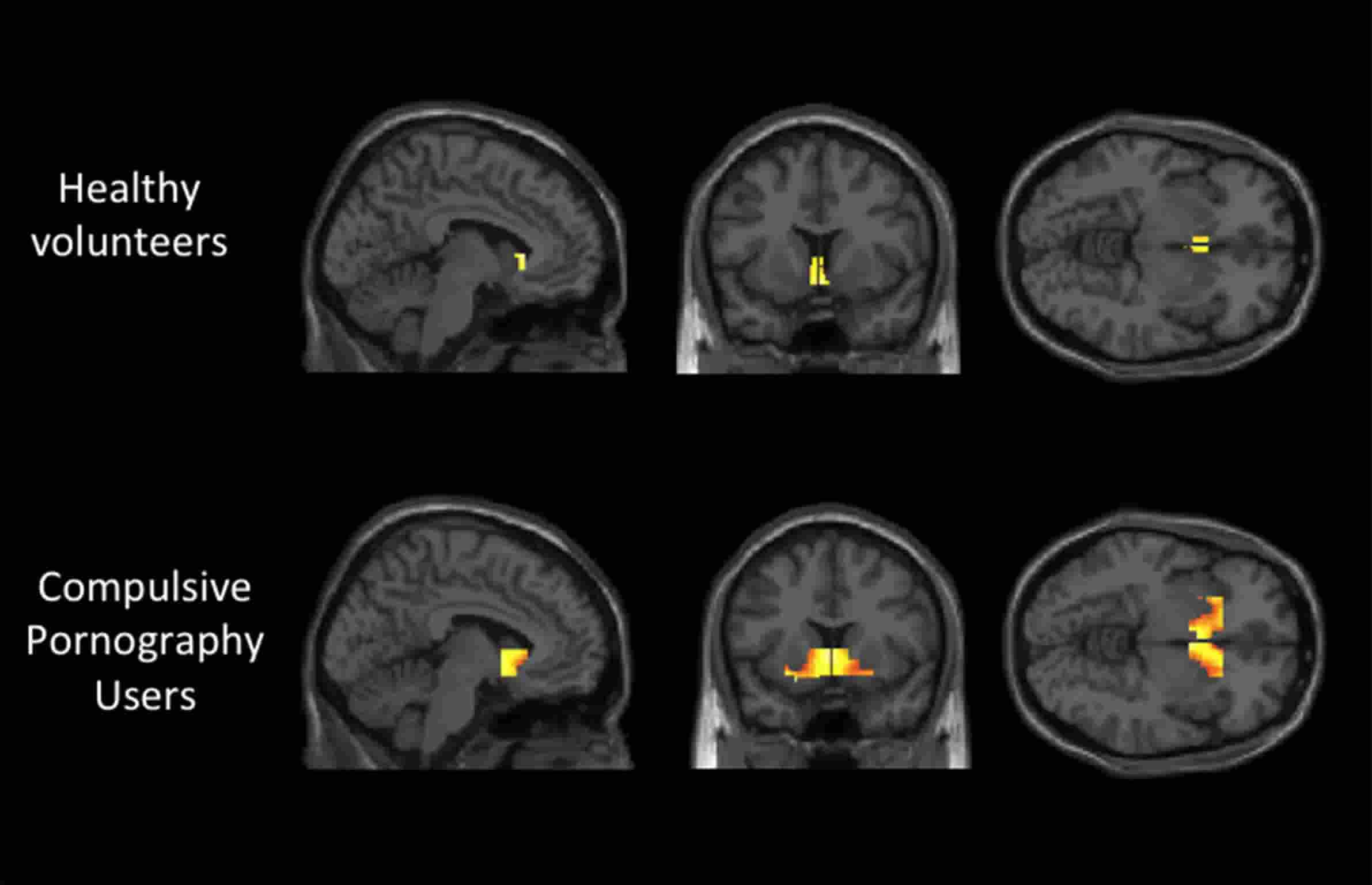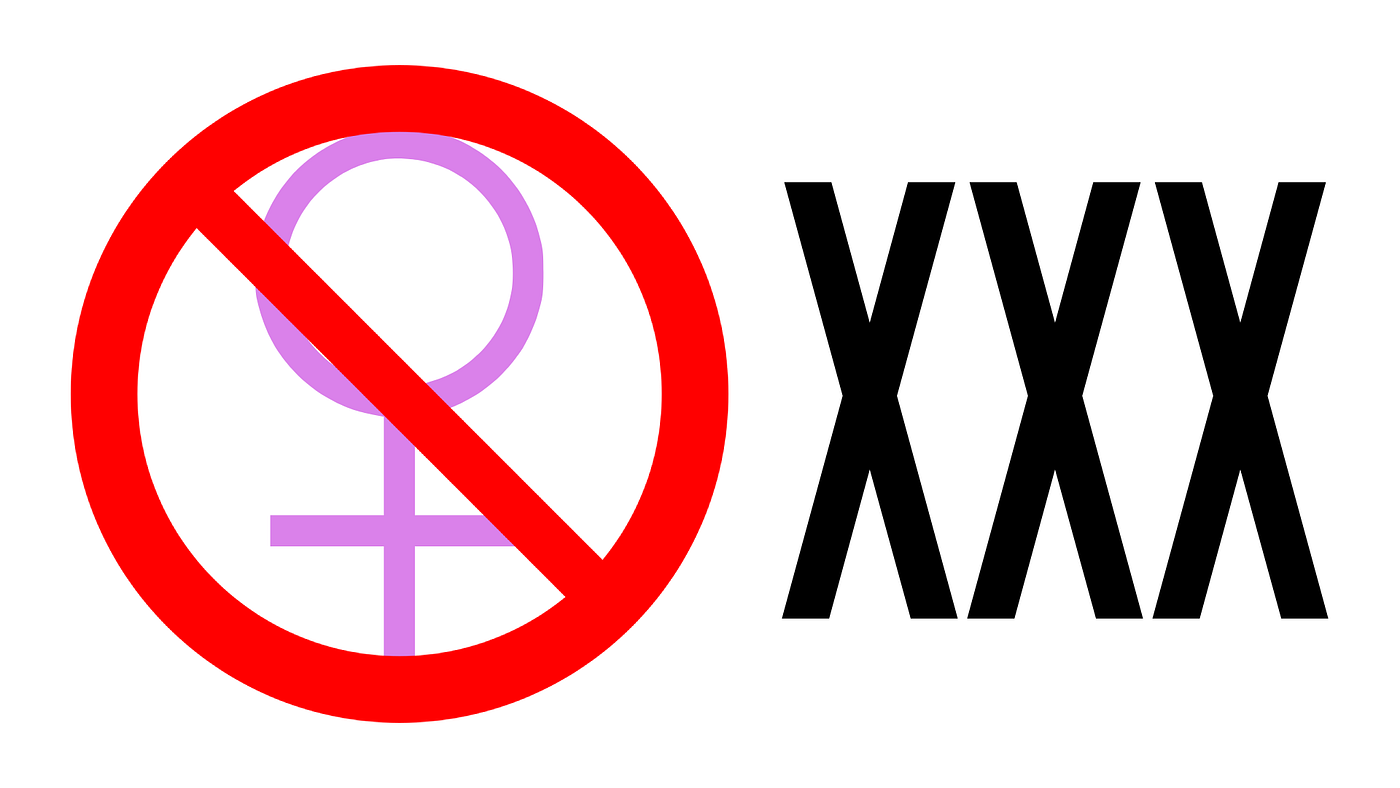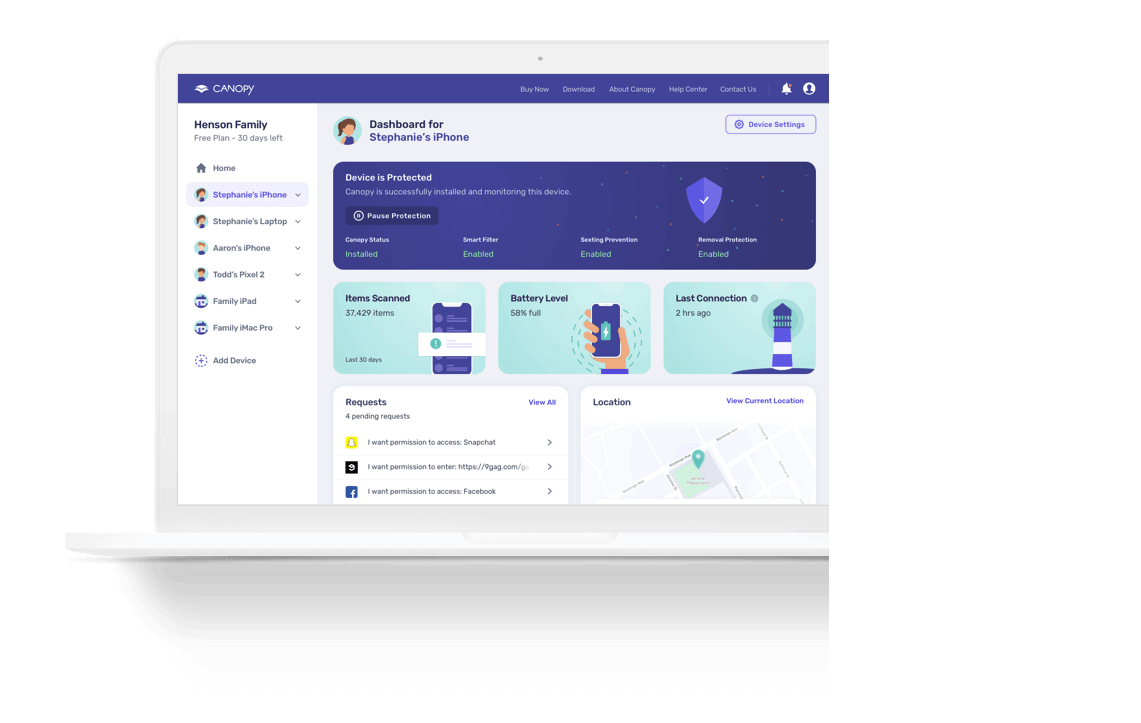2. Porn and Dopamine: Not a Normal Dopamine Reaction, It’s Worse
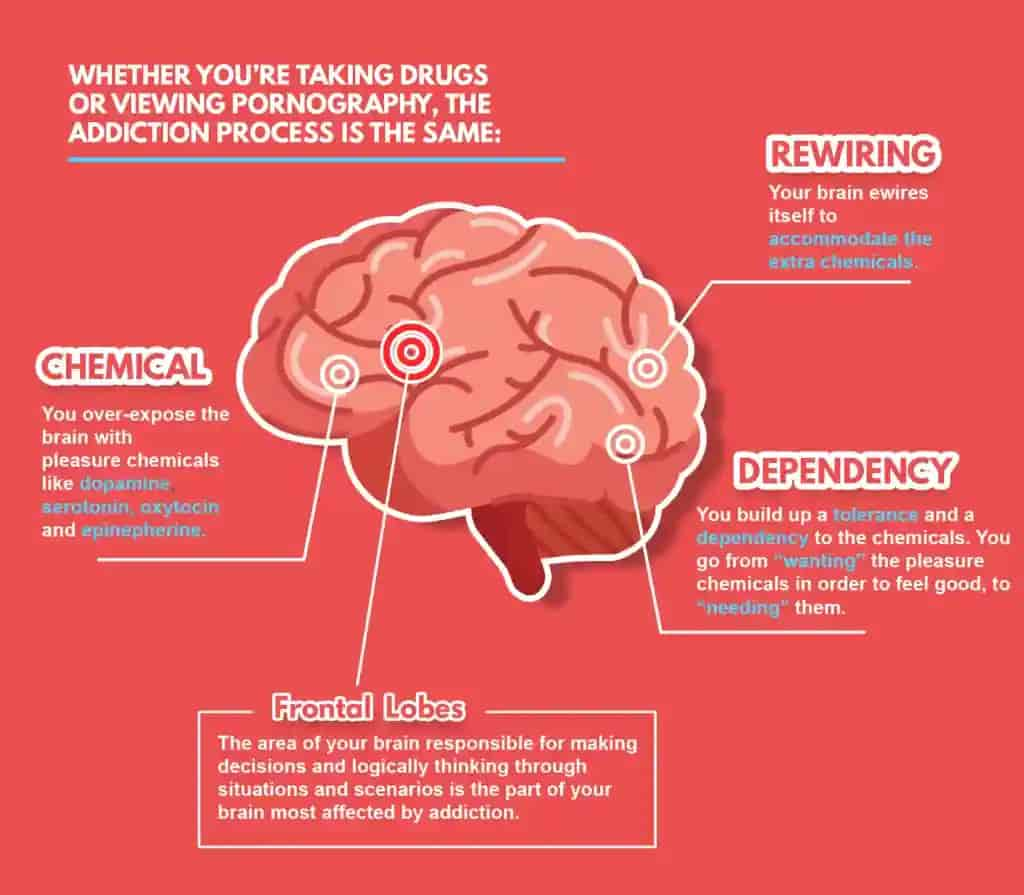
Porn and dopamine are closely linked — repeated exposure causes excessive dopamine release. Regularly watching porn can lead to desensitization because the brain gets used to the constant flood of dopamine. In short, the effects of porn on brain chemistry reduce natural reward sensitivity while increasing dependency.
This means real-life sexual experiences may start to feel less appealing, and over time, there’s a growing urge to watch even more porn to get the same level of satisfaction.
Dopamine is known as a “pleasure” chemical; it creates a link between certain habits and a “reward.” Activities like exercise, eating, and sex all trigger reactions in this part of the brain.
With pornography, however, the brain responds differently than it does with run-of-the-mill stimulation, like a sugary snack or a simple game. For most daily behaviors, the brain has an “off” switch that stops the release of dopamine once a craving has been satisfied.
In contrast, pornography impacts the brain much like an addictive drug by triggering ever-increasing amounts of dopamine. Over time, the brain builds up a tolerance to the excess dopamine and requires either more access or more extreme content (or sometimes both) to achieve that same level of perceived pleasure.
Research from the Neuroscience of Internet Pornography Addiction indicates that extended exposure to pornography correlates with less activity in the brain’s reward circuit.
Once the reward center is altered by “free” dopamine triggers like porn, it can lead to a person compulsively seeking out the activity that triggered the dopamine discharge.
“Dopamine is secreted at moments of sexual excitement and novelty. Porn scenes, filled with novel sexual “partners”, fire the reward center. The images get reinforced, altering the user’s sexual tastes.”
In porn, we get “sex” without the work of courtship. Scans show this alters the dopamine reward center (Guardian, 2013).
In short, when viewing pornography, your brain gets less pleasure while wanting more, often causing desensitization and an escalation in behavior.
Additionally, watching porn in a relationship can have negative impacts, potentially harming trust, intimacy, and overall relationship satisfaction.
3. Porn and Neuroplasticity: Be very concerned with what porn does to the brain – physically!
Studies have found that pornography consumption impairs judgment and impulse control.
Pornography consumption impacts the prefrontal cortex, a brain region responsible for executive functions like decision-making, impulse control, and morality. Regular porn use may rewire this area to a more juvenile state, potentially impairing judgment and impulse control. If you’re wondering why is porn bad for your brain, this rewiring of essential cognitive functions is a key reason.
“It’s somewhat paradoxical that adult entertainment may revert our brain wiring to a more juvenile. One of the key effects of porn on the brain is how it changes the prefrontal cortex, which governs decision-making and morality. The much greater irony is that while porn promises to satisfy and provide sexual gratification, it delivers the opposite,”—Rachel Anne Barr, Universite Laval Canada
4. Porn Makes Mental Health Worse: Depression, Anxiety, and Poor Quality of Life
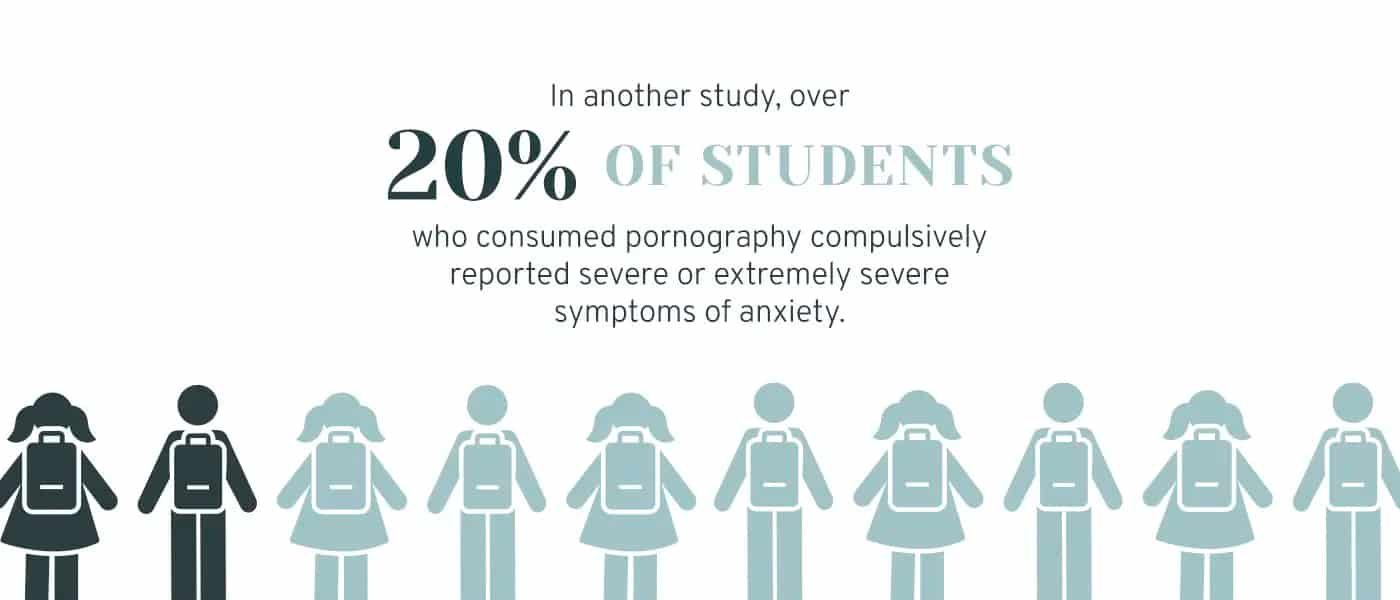
It’s important to highlight that studies show that changes in the transmission of dopamine can facilitate depression and anxiety.
The study found that pornography consumers report greater depressive symptoms, lower quality of life, and poorer mental health compared to those who don’t watch porn.
“After adjusting for demographics, SEMB users, compared to nonusers, reported greater depressive symptoms, poorer quality of life, more mental- and physical-health diminished days, and lower health status.”—2011 study
Anxiety and stress are known to be connected to various types of addiction, including behavioral addictions. Research has revealed a strong correlation between anxiety and problematic porn use.
In a separate study, more than 20% of students who engaged in compulsive pornography use reported experiencing severe or very severe anxiety symptoms.
Worried about what porn does to the brain? Protect your children watching porn. Learn about our award-winning parental control app here.
5. Unethical Acts: Pornography Consumption Makes You More Likely to Lie
A 2018 study found that participants in the study who viewed pornography were more than twice as likely to lie for money compared to a control group.
The researchers concluded that pornography causes unethical decision-making by increasing levels of dehumanization.
“Those in the pornography group were more than twice as likely to lie than the control group. We also found that the reason why pornography causes unethical decision-making is because it increases dehumanization levels.”
6. Porn and Misogyny: Rewiring For Violence
When neural pathways connect your brain’s reward center with something harmful, it can overwhelm previously held beliefs about what’s unethical or inappropriate and make you think those things are normal.
One study found that people exposed to significant amounts of porn thought that things like violent sex were twice as common as those not exposed to porn thought.
Further, this study finds that exposure to violent pornography is associated with higher rates of physical, sexual, and threatening dating violence, with notable differences between boys and girls (grade 10).
Boys exposed to violent pornography were 2–3 times more likely to report both perpetrating and being victimized by sexual violence, as well as being victims of physical violence. In contrast, girls exposed to violent pornography were 1.5 times more likely to engage in threatening behavior in their dating relationships.
The study suggests that violent pornography may contribute to harmful dating behaviors, particularly for boys, and calls for comprehensive prevention strategies. These strategies should focus on educating teens about healthy sexual behaviors and relationships to mitigate the potential risks of violent pornography exposure.
Research shows that regularly watching hard-core pornography can change men’s attitudes toward women, making them more likely to objectify women and adopt misogynistic views. Given these findings, it’s crucial to ask, is porn bad for teens, especially since some teenagers turn to pornography as a way to learn about sex, potentially leading to distorted ideas about sexuality and relationships.
A major theme in modern pornography is sexual aggression. One study reviewing popular porn videos found that in 9 out of 10, women were being physically harmed, yelled at, or otherwise mistreated. This frequent portrayal of violence against women in porn can contribute to unhealthy and harmful perceptions of sex and gender dynamics.
Sexual aggressiveness is a major message presented in modern pornography, and one review of popular porn videos found that in 9 out of 10, a woman was being beaten, yelled at, or otherwise harmed.
7. Viewing pornography at a young age can be damaging to the brain
The risk of becoming addicted to pornography is higher for teenagers as the reward centers in their brains respond 2-4 times more strongly than those of adult brains.
According to Psychology Today, teenagers who are exposed to sexual content are more likely to have sex at a younger age, and “early exposure to pornography is a risk factor for sex addictions and other intimacy disorders.”
Concerned about porn and dopamine disruption or long-term porn effects on brain health? Protect yourself and your loved ones by using a porn blocking app designed to keep unwanted content out of your digital life.


